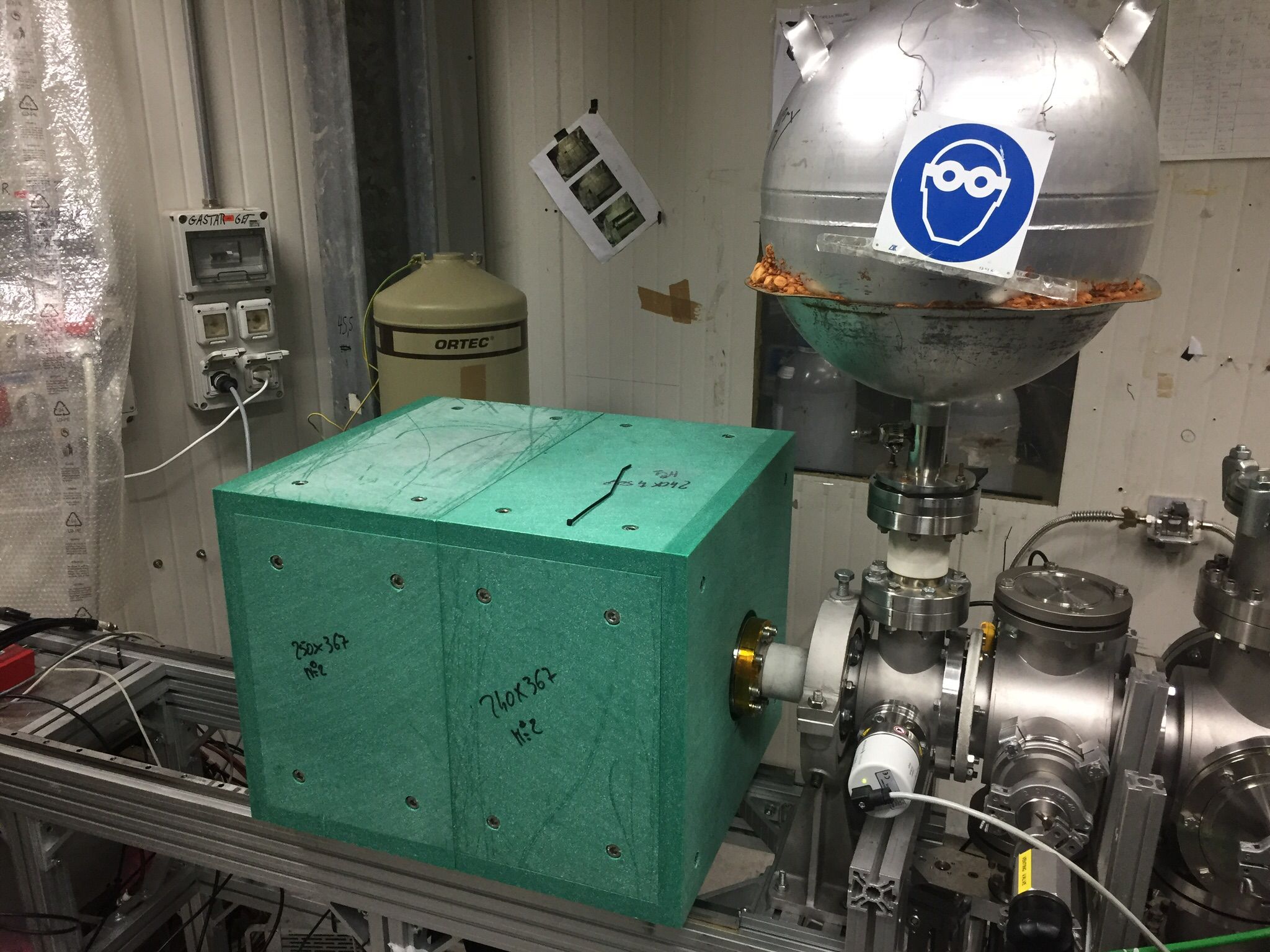Past news
Sixth National Meeting on Nuclear Physics
Sixth National Meeting on Nuclear Physics
The Sixth National Meeting on Nuclear Physics will be held in Trento, at the Sala della Cooperazione, via Giovanni Segantini 10, organized by TIFPA, Trento Institute for Fundamental Physics and Applications, from 26 to 28 February 2024.
The meeting, promoted by the National Scientific Commissions 3, 4 and 5, was born as an initiative of INFN and university researchers with the aim of creating an opportunity for discussion for the Italian community of physicists, theoretical and experimental, active in the field of physics nuclear, fundamental and applied.
All the details and information on the website https://agenda.infn.it/e/infn2024
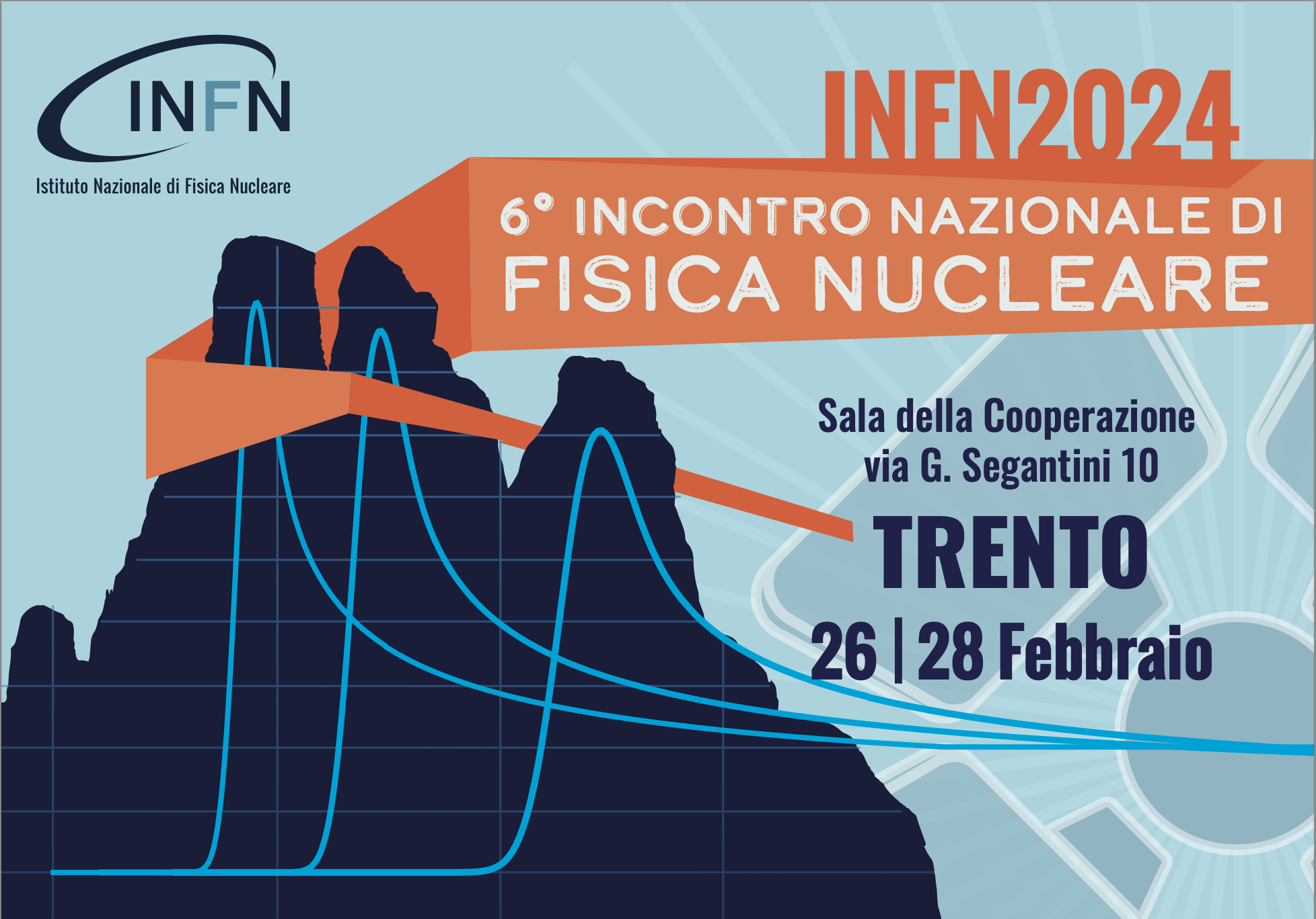
Claudio Villi Award 2022 Assigned
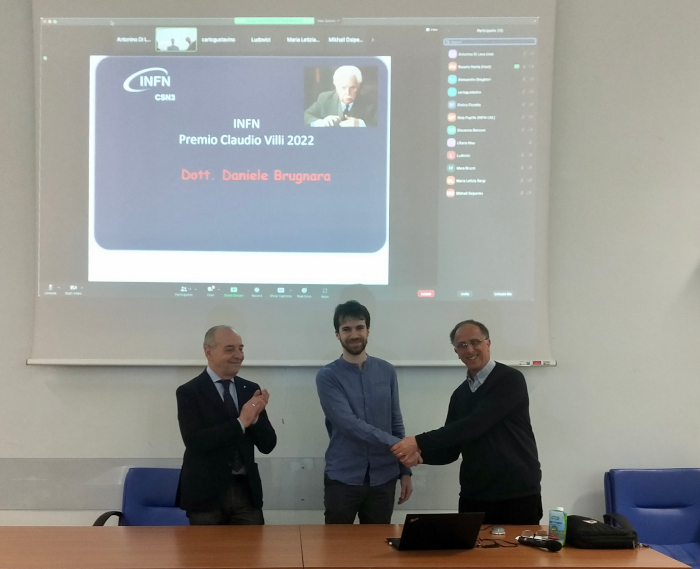
Claudio Villi Award 2022 Assigned
The "Claudio Villi" Award for the best PhD thesis in nuclear physics discussed in the period from 1 June 2021 to 31 May 2022 was awarded to the thesis presented by
Dr. Daniele Brugnara entitled "Investigating the 46Ar proton wave function with the 46Ar(3He,d)47K direct reaction" discussed at the University of Padua.
The awarding ceremony took place during the CSN3 meeting of 17 April 2023 held at the Congress Center of the University of Naples "Federico II" and was chaired by Dr. D. Bettoni, member of the INFN Executive Board, and by the President of CSN3 Dr. R. Nania.
A special mention was awarded to the following theses:
• Dr. Marco Baruzzo with the title "Development of the FAMU experimental apparatus for the proton radius measurement" discussed at the University of Udine
• Dr. Mattia Faggin with the title "Measurement of heavy-flavor decay electrons and heavy-flavor baryon production with ALICE experiment at LHC" discussed at the University of Padua.
• Dr. Chiara Pinto with the title "Light (anti)nuclei production with ALICE at the Large Hadron Collider" discussed at the University of Catania
• Dr. Lorenzo Scavarda with the title "Design and development of the Calorimeter for the FOOT experiment" discussed at the University of Turin
• Dr. Sara Ziliani with the title "Comprehensive investigation of light neutron-rich nuclei to test modern nuclear theoretical models" discussed at the University of Milan.
Claudio Villi Award 2021 Assigned
Claudio Villi Award 2021 Assigned
The "Claudio Villi" Prize for the best doctoral thesis in nuclear physics discussed in the period from 1 June 2020 to 31 May 2021 was awarded equally to the following two theses:
Dr. Eugenia Naselli for a thesis titled "Experimental study of Electron Cyclotron Resonance plasmas by a multi-diagnostics system in stationary vs. turbulent regimes: perspectives to in-plasma β-decay investigations of nuclear and astrophysical interest" discussed at the University of Catania
Dr. Giorgia Pasqualato for a thesis titled "Lifetime measurements in 105Sn: the puzzle of B(E2) strengths in Sn isotopes" discussed at the University of Padua.
The award ceremony took place during the CSN3 meeting of 22 April 2022 held at the Frascati National Laboratories and was chaired by Dr. D. Bettoni, member of the INFN Executive Board, and by the President of CSN3 dott. R. Nania.
A special mention was given to Dr. Simone Amaducci for a thesis entitled "Accurate measurement of the 235U(n,f) cross section at n_TOF between thermal energy and 170 keV, relative to 6Li(n,t) and 10B(n,α)" discussed at the University of Catania.
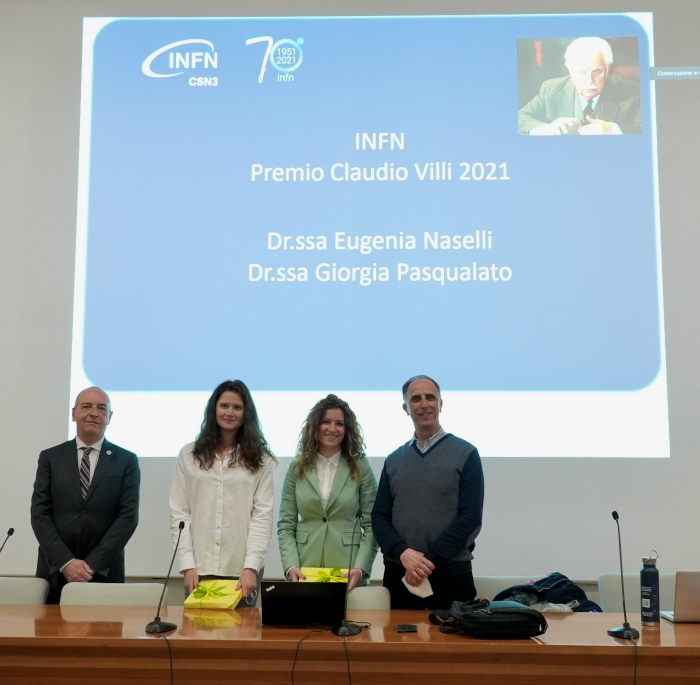
Successful installation of the first three AGATA triple clusters at Legnaro National Laboratories: our eyes to look into the nucleus
Successful installation of the first three AGATA triple clusters at Legnaro National Laboratories: our eyes to look into the nucleus
The first experimental campaign with the gamma-ray tracking array AGATA will start at Legnaro National Laboratories (LNL) this spring. The campaign is led by the GAMMA group in the framework of a large international collaboration involving the main European countries and it will use the intense stable beams provided the Tandem-ALPI-PIAVE accelerator complex. AGATA is the most advanced gamma-ray detector in the world. It is made of segmented hyper-pure germanium crystals, and it is conceived as a modular detector array which, once completed, will host 60 triple clusters. This instrument allows one, from the analysis of the electric signal shapes coming from the germanium crystals, to track the single gamma ray inside the crystal with a spatial resolution of few mm.
AGATA will enable the exploration of exotic nuclei produced in heavy-ion collision with unparalleled efficiency and sensitivity. In a first phase at LNL, AGATA will be coupled to the PRISMA large-acceptance magnetic mass spectrometer and to other ancillary detectors for charged particles, neutrons and high-energy gamma rays or for the measurement of lifetimes of excited nuclear states. The first three triple clusters of AGATA have been successfully installed together with the system to support their functioning and the electronics for signal treatment. By the beginning of the experimental campaign, up to 13 triple clusters will be installed, covering about one fourth of the solid angle. This number will then be extended in coming years until arriving at a coverage of half of the solid angle for the subsequent phases of the experimental campaign.
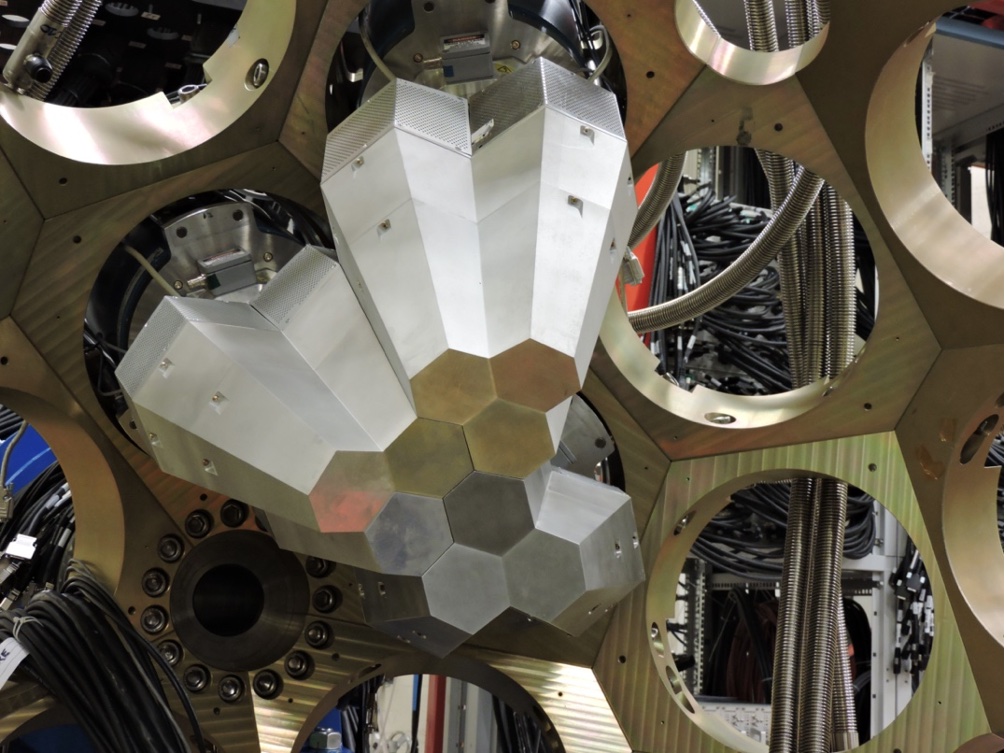
LABORATORI NAZIONALI DEL GRAN SASSO INFN: NEW HINTS ON THE SYNTHESIS OF HEAVY ELEMENTS IN STARS
LABORATORI NAZIONALI DEL GRAN SASSO INFN: NEW HINTS ON THE SYNTHESIS OF HEAVY ELEMENTS IN STARS
For decades, physicists and astrophysicists have been wondering about the origin of the elements heavier than iron. To produce them for the stars, neutrons are needed, which, being uncharged, are easily captured by other ions, allowing the synthesis of elements such as Cadmium, Tugsten or Lead.
The most important source of neutrons in stars is the capture that generates a nucleus of 16O and releases a neutron by the process, 13C(a,n)16O, after a long experimental campaign of about 4 years, the international collaboration LUNA (Laboratory for Underground Nuclear Astrophysics https://luna.lngs.infn.it ), which operates at the Underground National Laboratory (LNGS) of INFN, measured the speed of this process with very high precision directly at stellar temperatures.
The results of this work were published in the American Physical Society's Physical Review Letters:
https://journals.aps.org/prl/abstract/10.1103/PhysRevLett.127.152701
Gianluca Imbriani, spokesperson for the LUNA collaboration underlines that "our knowledge of the cross section of the process of capturing an alpha particle by a 13C nucleus, in the range of astrophysical energies, has so far been based on extrapolations from measurements to higher and on experiments based on indirect techniques”.
"About 50% of the elements heavier than iron present on Earth and in the Solar System were produced by stars with a mass slightly larger than that of the Sun, which lived before its formation 4.5 billion years ago - says Oscar Straniero, astrophysicist of INAF and collaborator of LUNA -. When they become red giants, ideal conditions develop within these stars for the activation of the 13C(a,n)16O process, which initiates the synthesis of heavy nuclei ".
"Thanks to the greatly reduced background level in the Gran Sasso underground laboratory - add Alba Formicola and Andreas Best, who coordinated the work for this measurement - LUNA is the only experiment to date that has managed to directly measure the process 13C(a,n)16O in the energy window of astrophysical interest, drastically reducing the uncertainties. This will have a great impact on the prediction of the formation of a series of heavy elements, the synthesis of which strongly depends on the speed of this process. "
"The LUNA experiment will continue its scientific activity in the next decade thanks to the LUNA-MV project - concludes Matthias Junker, local responsible for the Gran Sasso National Laboratories of the LUNA collaboration -, which will focus on the study of the key processes to determine the evolution of massive stars, important for understanding the chemical composition of the universe. "
About 50 scientists from universities and research institutes from Italy, Germany, Hungary and the United Kingdom collaborate with LUNA. For this measurement a contribution in particular should be underlined, and it is that of the Atomki laboratory in Debrecen, Hungary, where targets necessary for this experiment have been developed.
For further information, please contact: Gianluca Imbriani This email address is being protected from spambots. You need JavaScript enabled to view it.
